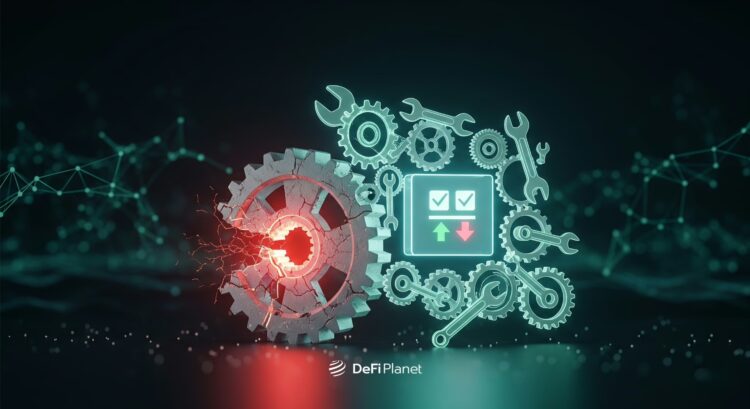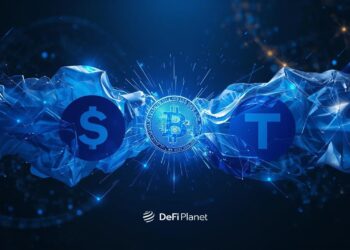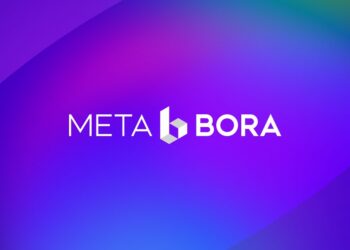The concept of onchain governance is like a digital version of democracy, where decisions are made through voting, but instead of paper ballots, people use digital tokens. This system is often used in Decentralized Autonomous Organizations (DAOs), which are groups that operate without a central leader, relying on rules encoded in computer programs.
At first glance, this seems like a fair and transparent way to make decisions; however, when we look closer, we find that this system has some significant problems that can make it less democratic than it appears.

What is Onchain Governance?
Onchain governance refers to the process of making decisions directly on the blockchain, and in this system, members of a DAO use governance tokens to vote on proposals. Each token typically represents one vote, so the more tokens you have, the more influence you wield.
For example, if a DAO wants to decide on funding a new project, members will vote using their tokens. The proposal with the most votes gets approved, and the decision is automatically executed by the blockchain\’s smart contracts. This setup is designed to make decision-making transparent and efficient. Since everything happens onchain, meaning it\’s recorded and visible on the blockchain, anyone can see who voted, how they voted, and what the results were.
There’s no need for a central authority like a board of directors or a company CEO. Instead, the rules are written in smart contracts, which, much like digital vending machines which carry out the decisions once the conditions are met (in this case, a vote passes) and are carried out automatically.
READ ALSO: Onchain Silence: What Happens When Smart Contracts Choose Not To Respond?
This kind of system is supposed to reflect the ideals of Web3 governance, where control is decentralized and the community has power. It promises a kind of blockchain democracy, where everyone with a stake in the project has a say in what happens next. Projects like MakerDAO, Uniswap, and Compound have all adopted this model, letting their communities vote on things like changes to protocol fees, launching new features, or allocating treasury funds.
While this sounds like a utopian digital society, the reality can be very different. As we\’ll see, just because a decision is made “onchain” doesn’t mean it’s fair or truly decentralized. Sometimes, the very structure of DAO voting and token-based governance can lead to a system where a small number of wealthy players control everything, thereby undermining the ideals that these projects were built on.
The Problem with Token-Based Voting
While token-based voting sounds democratic, it often leads to a concentration of power. The reasons include:
Wealth equals power
Since voting power is tied to the number of tokens owned, individuals or entities with more money can buy more tokens and thus have more influence. This means that a small group of wealthy participants can control decisions, sidelining the majority.
Low participation rates
Many token holders don\’t participate in votes. Reasons include the complexity of the process, lack of interest, or the belief that their vote won\’t make a difference. This apathy further concentrates power among active, often wealthy, participants.
Vote buying and manipulation
There have been instances where individuals or groups buy tokens specifically to influence a vote and then sell them afterwards. This practice undermines the integrity of the decision-making process.
Real-World Examples of Governance Issues
Several DAOs have faced challenges due to the flaws in onchain governance:
Build Finance DAO
In 2022, a member acquired enough tokens to pass a proposal that allowed them to take control of the DAO\’s funds, effectively draining its resources.
Uniswap DAO
A major venture capital firm held a significant number of tokens, giving it substantial influence over decisions, raising concerns about decentralization.
These examples highlight how the current system can be manipulated, leading to outcomes that may not reflect the broader community\’s interests.
The Illusion of Decentralization
The term \”decentralization\” suggests that power is distributed among many participants; however, in practice, onchain governance often results in centralization, at least in many cases, a situation where a few individuals or entities hold significant power. This situation contradicts the core principles of blockchain technology, which aim to distribute control and prevent single points of failure.
The illusion of decentralization becomes clear when we look closely at how governance tokens are distributed and used. In many DAOs, a large portion of tokens is held by early investors, project founders, or venture capital firms. This means that while anyone can technically vote, the people or institutions with the most tokens have the most say, similar to how shareholders in a traditional company do.

This creates a kind of token voting oligarchy, where the DAO, lab, and richest voices dominate, and smaller participants are often left unheard. For example, in some well-known Web3 governance cases, a single wallet or a handful of wallets have had enough tokens to single-handedly swing the outcome of important votes.
These wallets often belong to early insiders or centralized exchanges. In such scenarios, it\’s difficult to argue that the system is truly democratic or decentralized, and it’s more accurate to say that we’re seeing centralization in disguise; a few powerful players behind the curtain, shaping the future of protocols that are supposed to belong to everyone.
Also, these dynamics make DAO manipulation easier, because vote buying and coordination are often unregulated, wealthier participants can team up to push proposals that serve their interests. This undermines the community-driven ethos of blockchain and raises serious questions about what we really mean when we talk about decentralized governance.
So while onchain governance offers transparency and automation, it doesn\’t automatically guarantee fairness. The structure itself can be gamed, leading to a governance system that looks open and community-led but is actually controlled by a few. That’s the decentralization illusion, and it\’s something every project and participant in Web3 needs to understand.
Potential Solutions and Alternatives
To address these issues, several approaches are already being explored:
Quadratic voting
This system allows individuals to express the intensity of their preferences rather than just the direction. It helps balance the influence between large and small token holders.
Reputation-based systems
Instead of tying voting power solely to token ownership, some models consider a participant\’s contributions and reputation within the community.
Private voting
Implementing secret ballots can reduce the risk of coercion and vote buying, ensuring that votes reflect genuine preferences.
Legal frameworks
Establishing clear legal guidelines for DAOs can help prevent abuses and provide recourse in cases of misconduct.
Delegated voting (liquid democracy)
Community members can delegate their voting power to trusted representatives who are more active or informed, allowing better participation while still retaining control.
Multi-Sig governance
Important decisions may require approval from multiple trusted parties (multi-signature wallets), which adds a layer of checks and balances.
Dynamic quorum thresholds
Instead of a fixed number of votes required to pass a proposal, the system adjusts based on participation levels to encourage broader engagement and prevent low-turnout decisions.
Hybrid governance models
Some DAOs are combining onchain and off-chain methods, using social consensus or advisory boards to supplement purely token-based decisions.
Conclusion: A Work in Progress, Not a Finished Product
While onchain governance and DAOs offer exciting, futuristic ways for communities to organize and vote, they are still a work in progress. These systems are like early experiments in digital democracy; full of potential but also facing serious growing pains. Right now, many of these platforms fall short of their promises and issues like low voter turnout, token hoarding, and governance token manipulation mean that power often sits in the hands of a few, rather than being spread out among many.
This challenges the very spirit of Web3 governance, which is supposed to be open, fair, and community-driven. If only a small group of wealthy insiders or early adopters can decide what happens, then are we really building something better than traditional systems? Or are we just repeating old patterns with new technology?
This isn’t a reason to give up on the idea; it’s a reason to improve it, and innovators in the blockchain space are actively exploring better models such as quadratic voting, reputation-based governance, or delegated voting systems that aim to level the playing field. These ideas aim to balance power, give smaller voices more influence, and reduce the risk of big players dominating.
Ultimately, the path forward for DAO voting and onchain governance will require transparency, education, and continued experimentation. The blockchain community must stay critical, ask hard questions, and refuse to settle for surface-level decentralization. If we’re serious about building a more inclusive and democratic digital future, then we need to design governance systems that truly reflect those values, not just mimic them in code.
In the end, blockchain democracy can only work if it\’s genuinely for the many, not just the powerful few. It\’s up to builders, communities, and users to make sure the tech lives up to its ideals.
Disclaimer: This article is intended solely for informational purposes and should not be considered trading or investment advice. Nothing herein should be construed as financial, legal, or tax advice. Trading or investing in cryptocurrencies carries a considerable risk of financial loss. Always conduct due diligence.
If you want to read more market analyses like this one, visit DeFi Planet and follow us on Twitter, LinkedIn, Facebook, Instagram, and CoinMarketCap Community.
Take control of your crypto portfolio with MARKETS PRO, DeFi Planet’s suite of analytics tools.”





















